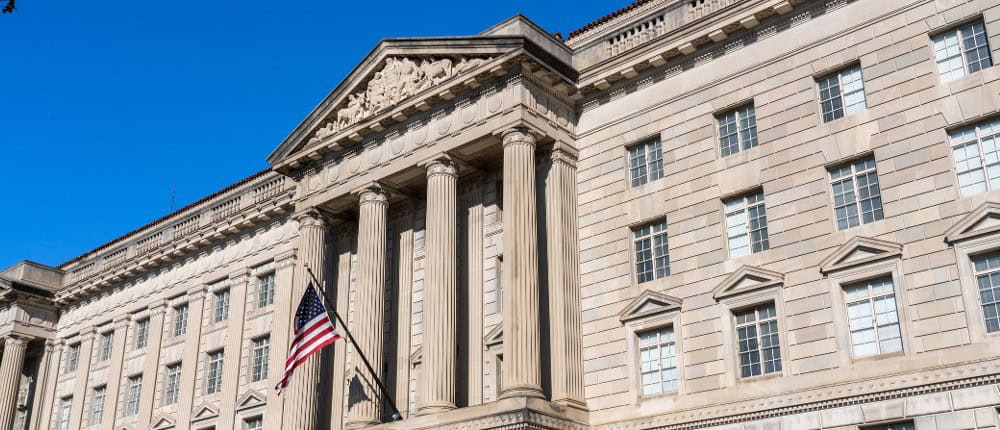Share buybacks surge in January as markets rally.
The January Effect, or the perceived seasonal tendency for equity prices to rise that month, was in full swing to start off 2023. The phenomenon is believed to be a result of investors closing out their losing positions in December for tax-loss harvesting and starting the year with a clean slate and opening new positions in January. The Dow Jones climbed 350 points in January, the Nasdaq had its best month since July, and the S&P 500 posted its best January in four years. The icing on the cake for equity investors last month was the record-setting share buyback pace. Buybacks climbed to $132 billion to end the month, tripling what it was the previous year. Corporate earnings and returns to shareholders have been on a meteoric rise since 2021, and although we have seen a flattening of both to close out 2022, it looks like these may have been false peaks. Companies have been sitting on large sums of cash that have accumulated over the past two years, and the equity market decline throughout 2022 was viewed as a perfect buying opportunity for many corporates. While the economic future remains cloudy, management across a variety of sectors viewed the best use of cash was to be spent on themselves. Most firms halted repurchases during the beginning of the pandemic, and the start of 2023 looks like corporates are compensating for lost time. Although this is a positive sign of management’s confidence in their own companies, this record buyback month is a substantial transfer of risk from equity to debtholders. What’s more, there was a record amount of debt issuance in the first three days of January, highlighting corporate’s opportunistic mindset for the coming year but extending additional risk to the debtholders. Goldman Sachs strategists, led by David Kostin, are forecasting buybacks to fall 10% in 2023. If the economy were to dip into a recession, strategists forecast a 40% drop in buybacks. As we move further into 2023, we will keep a close eye on whether January represents the new standard or if companies will begin to pull in the reins.
U.S. Bank’s Balance Sheets Begin to Look a Bit More Normal as Lending Continues.
H8 data released by the Federal Reserve last week has some interesting takeaways for U.S. Bank lending including a continued appetite for lending and a decrease in riskless assets. Banks have continued to lend despite higher rates cooling demand which causes loans to make up more of the balance sheet. Bloomberg has reported that total loans and leases have increased to 52.46% of total assets, which is up from 47.8% a year ago. In addition, safe assets such as treasuries and agency securities, have declined as a percent of total assets to 44.7% from 50.7% a year earlier. We know that most banks are expecting a recession in 2023 and have tightened some lending practices, but the movement from riskless assets to loans on the balance sheet shows that A) banks may not be expecting a severe deterioration in loans and B) that banks view their balance sheets as potentially too conservative now than the position they had coming out of the pandemic. We note that despite the increases, loans/assets remain below the pre-pandemic average and another metric of loans, loans/deposits, remains 10% below its pre-pandemic average according to Barclays which shows that banks are still flush with deposits post-pandemic. Our research has shown that U.S. banks are only expecting credit quality to deteriorate to 2019 levels which would be a very mild deterioration by historical standards, so it is likely that while we expect loan growth to slow, U.S. banks are likely to retain more of their assets in loans to capture higher rates. We should continue to see loans/deposits ratios increase as deposits move towards higher yielding alternatives like money market funds.
After a year of sharp decline, the housing market is finally showing signs of thawing.
A roughly 1% decline in the 30-year home loan rate has increased mortgage applications almost 25% since the end of 2022. The housing market serves as a barometer to how the economy is responding to loosening financial conditions, as the Federal Reserve is indicating that it is nearing the end of rate rises. Despite mortgage rates still being well above the 3% range from a year prior, many would-be homebuyers who have been waiting on the sidelines have found a reason to re-enter the market with lower rates and relatively lower home prices as incentives. The Case-Shiller National Home Price Index, a measure of housing prices across the country, is up 40% from three years ago but has finally declined off peaks at the end of 2022, paring back over a decade of one-way growth. While Goldman Sachs economists expect that the worst of the housing downturn has passed, many economic headwinds still remain. Higher and longer-than-expected rate rises would not only raise mortgage rates but also have the potential to trigger a U.S. recession, a one-two punch for any housing market rebound.



